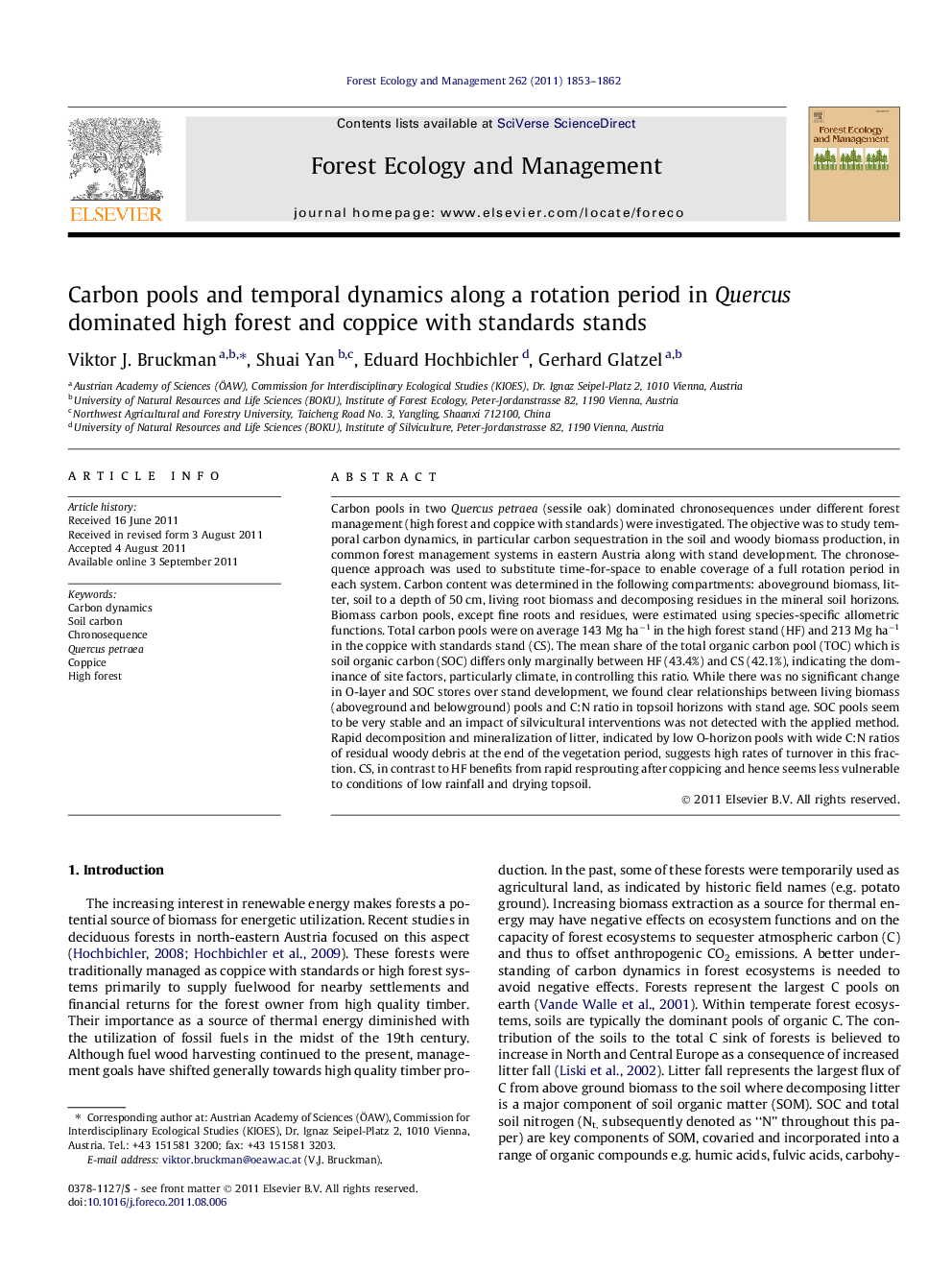| کد مقاله | کد نشریه | سال انتشار | مقاله انگلیسی | نسخه تمام متن |
|---|---|---|---|---|
| 87601 | 159257 | 2011 | 10 صفحه PDF | دانلود رایگان |

Carbon pools in two Quercus petraea (sessile oak) dominated chronosequences under different forest management (high forest and coppice with standards) were investigated. The objective was to study temporal carbon dynamics, in particular carbon sequestration in the soil and woody biomass production, in common forest management systems in eastern Austria along with stand development. The chronosequence approach was used to substitute time-for-space to enable coverage of a full rotation period in each system. Carbon content was determined in the following compartments: aboveground biomass, litter, soil to a depth of 50 cm, living root biomass and decomposing residues in the mineral soil horizons. Biomass carbon pools, except fine roots and residues, were estimated using species-specific allometric functions. Total carbon pools were on average 143 Mg ha−1 in the high forest stand (HF) and 213 Mg ha−1 in the coppice with standards stand (CS). The mean share of the total organic carbon pool (TOC) which is soil organic carbon (SOC) differs only marginally between HF (43.4%) and CS (42.1%), indicating the dominance of site factors, particularly climate, in controlling this ratio. While there was no significant change in O-layer and SOC stores over stand development, we found clear relationships between living biomass (aboveground and belowground) pools and C:N ratio in topsoil horizons with stand age. SOC pools seem to be very stable and an impact of silvicultural interventions was not detected with the applied method. Rapid decomposition and mineralization of litter, indicated by low O-horizon pools with wide C:N ratios of residual woody debris at the end of the vegetation period, suggests high rates of turnover in this fraction. CS, in contrast to HF benefits from rapid resprouting after coppicing and hence seems less vulnerable to conditions of low rainfall and drying topsoil.
► We studied temporal carbon dynamics in differently managed Quercus dominated forests.
► Ecosystem carbon pools are low with high turnover and low accumulation rates.
► The impact of logging on soil organic carbon stores is low.
► Climate is the main determinant controlling C accumulation in different compartments.
Journal: Forest Ecology and Management - Volume 262, Issue 9, 1 November 2011, Pages 1853–1862